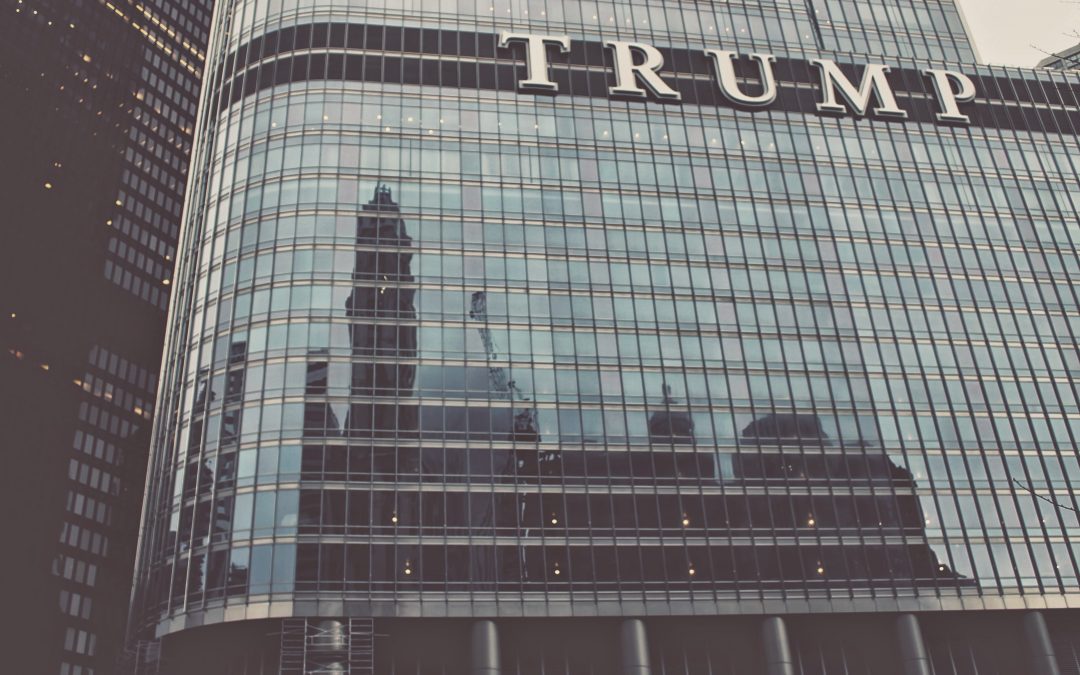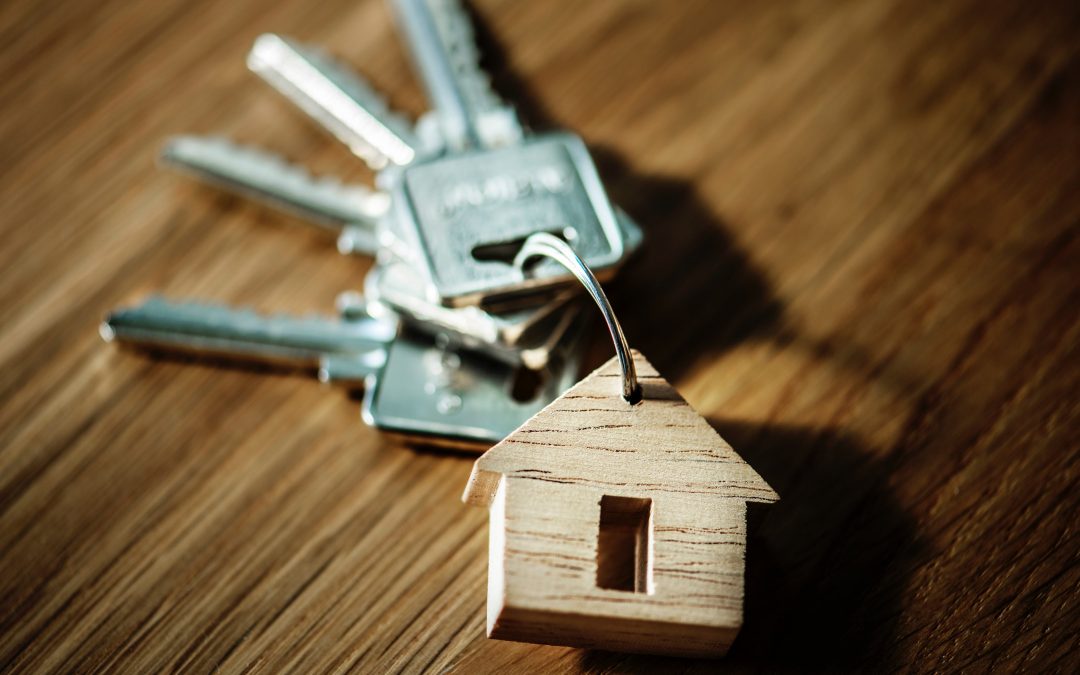
by BCB Property Management | Apr 10, 2017 | Neighborhoods, New York City, Real Estate
Some real estate professionals say there’s no doubt north is the way to go.
With only Manhattan separating them, is it time for the Bronx to admit that it has more in common with Brooklyn than previously thought?
According to some real estate professionals, the answer is a resounding yes. Even if the idea of the Bronx being a great place to live or invest raises eyebrows from hipsters to former-hippies now comfortable in their Manhattan apartments.
Consider this bit of history. When the Sex and the City character, Miranda, announced she was moving to Brooklyn the idea was so abhorrent to Manhattanites that the New York Post ran an article listing all the (real-life!) hip spots that Carrie and Miranda could frequent.
Now, only a decade later, Brooklyn’s average rent for a one-bedroom apartment runs between $1,600 and $2,900, depending on the neighborhood. It costs about $790,000 on average to buy a home, and well into the millions in trendier neighborhoods.
What’s a dedicated middle-class New Yorker to do?
Manhattan? Probably not with rents running $3,000 and buying about a $2 million endeavor.
It may be time to head north.
First, there’s the basic premise that Brooklyn prices are continuing to go up, so the Bronx is a more affordable option given the average rent of $1,200/month.
But consider the other benefits of the Bronx, like great transportation. The subway and other public transportation options are excellent—and traveling from midtown to the south Bronx is a fairly short commute.
For example, it’s only a 24-minute subway ride from Radio City Music Hall to Yankee Stadium. The residential areas just north of the stadium are considered up-and-coming, and affordable, according to multiple sources.
If driving is a must, it’s actually possible in the Bronx. I-87 along the west side of the borough is far easier to navigate than, say, the lower east side or Time’s Square.
For the more green-minded commuters, the recent opening of the historic High Bridge (New York’s oldest standing bridge, originally used to transport water from the Croton River to New York) offers a quick, convenient pedestrian and bicycle route from Highbridge to Upper Manhattan.
Not only are the rents in the neighborhood still reasonable, but the apartments are often in renovated historic buildings, originally constructed in the 1920s and 1930s.
For even more gorgeous, historic, architecture the buildings along the 5-mile stretch of the Grand Concourse are an excellent option. While this area, originally inspired in the early 1900s by the Champs-Elysees in Paris, fell into considerable disrepair in the 1970s and ‘80s, an $18 million restoration and landscaping initiative in 2008 revitalized the neighborhood.
Further north still is Fordham Heights, which is flanked by both the Bronx Zoo and the New York Botanical Garden, and much more affordable than the real estate near Central Park.
Continuing north (no worries, not Niagra Falls!) recent re-zoning along Webster Avenue has created spaces now open to residential development that is working and middle-class friendly.
While these areas are not all a short commute to the culture and delights of Manhattan, they are still within close enough proximity (about an hour on public transportation) for trips into the city, business meetings, or even daily commutes.
Plus, culture and great food is already a part of the Bronx! In addition to the Zoo and the Garden, multiple colleges and universities offer music, dance and theatrical events.
The food scene? Solid—and growing.
Many New Yorkers believe that the Bronx is home to “real” Little Italy. Practically disdainful of catering to tourists, Arthur Avenue in the Belmont Neighborhood is still lined with Italian shops, markets and restaurants that have been there since Italian immigrants settled the neighborhood in the 1950s.
For the real “foodies” of New York, it’s good to know that there’s a culture of food that’s diverse enough to bring Anthony Bourdain to the Bronx.
In 2014, CNN aired a Bronx episode of Bourdain’s show “Parts Unknown.” Bourdain sampled Arthur Avenue’s Italian offerings, but dove whole-heartedly into Puerto Rican, African and Caribbean dishes.
“If the Bronx were a neighborhood in Manhattan, sort of shrunk down, you’d have hipsters crawling all over this place.” Bourdain quipped.
Affordable, easily accessible by public transportation, and with vibrant neighborhoods and ethnic diversity–in a New York minute the Bronx may beat Brooklyn as the place to live.

by BCB Property Management | Mar 13, 2017 | Uncategorized
Will the tech startup Opendoor end the need for open houses, or is it just the latest upstart?
Anyone who’s considered buying or selling a house this millennium is familiar with Zillow, the online real estate database that’s been around for about ten years.
Much less familiar is Opendoor, a startup that launched about two years ago and, if the model works, promises to change the way homes are bought and sold nationwide.
Opendoor is a company that purchases houses (sight unseen except for one inspection) for a flat price determined by a complex algorithm. The company pays cash and the seller is quickly able to move on with their life—literally.
The exchange happens entirely electronically, except for the inspection to verify the seller-provided information.
Currently, Opendoor operates in two markets: Phoenix, Ariz. and Dallas, Texas. The company only deals in single-family homes, valued between $125,000 and $500,000, that were built after 1960. No fixer-uppers, “has potential” or luxury properties are allowed.
How, exactly, does Opendoor work?
Eric Wu, the 34-year-old cofounder of Opendoor, says that he wants to lessen the pain of moving for both sellers and buyers. To that end he put together a team that built a platform to streamline the process for both sides.
For sellers, that means first contacting Opendoor via their website and providing details about the house to be sold. Opendoor then makes an offer, if interested. If the offer is accepted (and the company aims to make accurate and competitive offers) then an inspection is scheduled.
Sellers then have a 60-day window for a closing date. On the closing date, which is set by the seller, the seller is paid and Opendoor (which handles all the “paperwork” details) owns the home.
For buyers, the process is a big step up from viewing property listings online. In addition to being able to check out the available homes, buyers can be connected to financing options. Another bonus: the ability to tour the home anytime between 6AM and 9PM, daily.
Remember, the houses are empty. Want to schedule a visit on the run? Opendoor’s got an app for that. Offers can be made electronically and reviewed quickly. On top of it, they even have a 30-day, money back guarantee.
The Good, the Bad and the Unknown
The model certainly has financial potential, according to the founders and their investors. Forbes called it one of the next “Billion-Dollar Start-Ups” because it taps into “a market with $1.4 trillion in annual transaction volume that’s been largely undisturbed for decades.”
Opendoor makes money by charging an (on average) 8 percent transaction fee to sellers. That’s obviously good for Opendoor, and the ease of selling is certainly good for the sellers.
But, there’s a downside. Opendoor is faced with the task of turning properties over, just like any real estate agent. Sitting on properties, or selling houses for less than the purchase price, isn’t going to turn a profit for the company.
Then there are the parameters, geographically and otherwise, of the model. Mid-sized markets, with new construction, like Phoenix and Las Vegas (where Opendoor is heading next) might work—but what about more established cities, like Boston, Mass.? Buyers in Boston like historic properties.
Buying into even larger markets, like New York, would also seem to be a non-starter. In 2015 the average price of a single-family home in Manhattan was $1.87 million. Of course, there’s always Queens where the average price was only $452,304.
Finally, while there is certainly a business and financial transaction happening, purchasing a home is an emotional decision as well. An “old fashioned” realtor knows this and can help guide buyers along the ups and downs of the journey.
So far, that’s something no online platform, even Opendoor, can realistically offer.

by BCB Property Management | Jan 16, 2017 | New York City, Real Estate
New York City has already accommodated for Trump supporters—and Donald Trump’s headquarters in Midtown leading up to the 2016 election and beyond. Now, the city is preparing for four years of tightened security and more traffic as presidential motorcades make their way in and out of New York City during Trump’s term. Commuters, Manhattan residents, and taxi drivers are all going to be part of larger swarms of traffic going in and out of New York City on a daily basis. If you’re planning to move into the city or are already living in the city and exploring housing options, don’t overlook the traffic forecast in the neighborhood as we see an increase in vehicles and tighter security measures because of Trump’s election.
While residents and visitors to Manhattan are already used to traffic jams and traffic headaches day and night, having a New York resident serve as President of the United States means there will be many presidential motorcades and security officers patrolling the streets. The streets around the Trump Tower in Midtown Manhattan were almost impossible to maneuver the week of the election and for a few weeks afterwards as both protesters and supporters made their way to the tower to share their views.
Since Donald Trump has New York City roots and a team in the city working with him, he may be making many trips to area restaurants, event venues, and other points of interest at a moment’s notice. This won’t give the city much time to block off roads, divert pedestrian traffic, and take other security measures to ensure Trump, his family, and his workers are safe — and that New York residents and drivers aren’t entirely affected by Trump’s next move.
In a letter to Obama and Congress about Trump’s inauguration, Mayor Bill de Blasio pointed out, “It is a high-density neighborhood and street traffic easily obstructs pathways to and from the building, making it profoundly challenging for the NYPD to establish a secure perimeter.” The first bill to cover Trump security costs was an estimated $35 million.
So what can we expect now that election season is over? Any major events where Trump will be present will require additional security and NYPD may be involved in redirecting traffic. We might see a disruption in tourist flow when Trump is traveling across the city. Director of the New York Taxi Workers’ Alliance, Bhairavi Desai, shared with the Wall Street Journal that 20-minute trip turns into a 40-minute trip when Obama was in town. Many cab drivers will be looking at similar traffic delays and the possibility of changing routes at the last minute now that Trump, a local resident, will be in town more often than not.
The recent election has shaken up New York City in many ways and we can expect to see a significant impact on traffic patterns and tourist flow in the upcoming years. Current residents and future residents to the city will need to accommodate for large-scale traffic jams and ongoing traffic problems as Trump and his crew make their way around the city for events, appearances, and day-to-day travel needs.

by BCB Property Management | Jan 13, 2017 | New York City
Hint: Yes, and Maybe Sooner than We Thought
While finding shelter may be one of the oldest human instincts, the way we find shelter may be about to change drastically—at least when it comes to buying or renting a new home.
In early December, 2015, a father-son team, Miquel and Ami Berger, of Albany, New York created an app that works with Amazon Echo–one of the many devices currently available in the U.S. that offer electronic virtual assistants. In the case of Amazon, the assistant is named “Alexa.”
Virtual assistants, from Alexa, to Apple’s Siri and Microsoft’s Cortana, respond to vocal prompts and do everything from finding a coffee shop to getting directions to The American Museum of Natural History to turning on the lights in your home– depending on how digitized and wired-up your life is. (For a humorous explanation of the benefits and limits of various personal assistant devices, or “the genie in the hockey puck” read OnComp’s blog.)
So, how does the app work? Pretty much like having a conversation with an agent or relator who has every MLS listing in their head–albeit a formal and limited conversation. First you ask Alexa to “open real estate.” Alexa will then say, “welcome to your virtual agent” and you’re off. Do you want to buy, rent or sell? How many bedrooms? What’s your price range?
The app is being tested in the Berger’s hometown of Albany and is one of only a few on the market.
Does that mean the market is limited? Will people really use a disembodied electronic voice to find a new home? Trends indicate that yes, this is the next technology step in house hunting.
According to the National Association of Relators, in 2015, 51 percent of home-buyers found their house on the internet and 34 percent used an agent. By comparison, eight percent of home-buyers saw a yard sign or an ad for an open house.
Digital assistant apps are, essentially, where the internet and the agent are one and the same.
Still seems far-fetched? Well, remember when phones were only used to make phone calls?
Like smart phones, virtual assistants are getting smarter and more useful every day. In June, Fortune magazine reported that Alexa had more than 1,000 skills, due the multitude of apps being developed for the Echo device.
If the use of digital assistants explodes the way smart phone use in general has—64 percent of American adults now own a smart phone, which is nearly double the number reported in 2011 according to the Pew Research Center– then asking an app to find you a place to live could become common-place. The same Pew survey also reports that phones are already used for everything from checking on health conditions to applying for jobs.
Is it such a stretch, then, to imagine a scenario where a frustrated renter is standing in their tiny, galley, kitchen and walking Alexa, or Siri, through filling out forms for a mortgage? One that will cover a larger home with a real kitchen!
Take into account that 35 percent of the homes purchased in 2015 were by first-time buyers, and that the median age of first-time buyers was 32. These older Millennials, despite their generation’s bad-rap, are tech-savvy grown-ups who need a great place to live.
Where are they going to look for information? Clearly, not the newspaper or yard signs. But asking a personal, digital, agent to find the perfect home?
That’s not just in some far-off, fantasy, future—it’s here.

by BCB Property Management | Jan 4, 2017 | Real Estate
New Year’s resolutions for many Americans might include taking a leap in the housing market, whether it be buying, renting, or selling a home. Identifying possible behaviors of the real estate market in 2017 can help those entering the real estate market make informed and timely decisions. Predictions show that competition for affordable homes will be fierce this year due to increasing numbers of home buyers who are on the hunt for affordable homes that just aren’t as readily available as they used to be. Knowing these trends can give renters and buyers the upper hand in a competitive market. Here are some other factors that are shaping real estate in 2017.
1. Finding value in older construction
While new homes are desired by many, it could be advantageous to look at older construction that could be remodeled, giving buyers the opportunity to incorporate features that fit their preferences. There is also potential to save money by going with an older construction, especially since the price of new construction is going up.
Lately, homebuyers can’t seem to staff enough construction workers to complete jobs. In fact, the National Association of Homebuilders estimates that there are roughly 200,000 unfilled construction jobs in the U.S., which is a jump of 81 percent since 2014. Areas of the U.S. that were hit hard by the housing market crash saw a significant decline in the number of construction workers available for employment. Now, homebuilders find it hard to convince these skilled workers to return to the industry.
This labor shortage is increasing builders’ costs, worker’s wages, and slowing down construction. The time it takes to develop homes is increasing since the demand for workers is growing. Since costs are increasing, developers are pressured to focus on high-end jobs in order to make up for their losses. Meanwhile, contractors are eager to dive into renovation projects for buyers who take on a remodel.
2. Millennials will enter the housing market
Older millennials are now in their early 30s and are looking to settle down and buy their first home. In fact, Realtor.com’s annual survey of potential home buyers shows that 78 percent of first-time home buyers will be in the 25-34 age group in 2017. This large percentage of millennials in the first-time buyer category means that competition for affordable homes will be aggressive, especially in the suburban housing markets. Numerous studies have shown that millennials are attracted to the suburbs more so than large cities due to the availability of well-paying jobs. So it may be worthwhile for buyers to expand their search to urban areas where there may be more options and less competition.
3. Housing inventory will decrease
According to the Realtor.com 2017 National Housing Forcast, housing inventory is down by about 11 percent in major metropolitan housing markets, and this percentage is not expected to increase in 2017, which will mean fewer options for buyers.
The reason for low inventories of homes across the U.S. is thought to be due to several circumstances. First-time home buyers from roughly five years ago are now eager to move out of their starter homes and into the next level home. Unfortunately, these homeowners are discovering that those next-level homes are unaffordable. Their homes are not going back on the market, contributing to a decrease in inventory. Additionally, homeowners who purchased their home before the housing market crash now owe more on their houses than what they are worth. This prevents another category of homes from going back on the market.
Continued low inventory, coupled with an increasing demand, isn’t doing home prices any favors. Home prices have steadily been on the rise, which have increased by an astonishing 8.2 percent.
4. Mortgage rates are on the rise
Mortgage rates are still relatively low and it’s a prime time to enter the housing market. However, rates are beginning to climb, so buyers may want to get pre-approved as soon as possible. According to the Federal Reserve’s recent indication, there will be three more rate increases in 2017. The Mortgage Bankers Association (MBA) predicts the following rates for 2017 by quarter: Q1= 3.9%, Q2=4.1%, Q3= 4.3%, and Q4= 4.4%. Continued mortgage rate increases could lead to ‘rate lock,’ causing homeowners to be hesitant to sell. As rates steadily increase throughout 2017, it will be more beneficial for buyers to make their move in the winter or early spring before mortgage rates get any higher.
5. Home appreciation will slow down
Home appreciation is expected to slow down in 2017, but it is not expected to stop altogether. The Realtor.com Housing Forecast predicts that home prices will grow by 3.9 percent annually, compared to an estimated 4.9 percent in 2016. This can be seen as a positive trend for 2017 since continual appreciation for too long can lead to a market bust similar to what we experienced several years ago. Despite some of the other trends that are increasing the price of homes, this trend will help to stabilize prices.
Due to a shrinking pool of available homes and increasing mortgage rates, buyers who intend to enter the housing market in 2017 would benefit from doing so sooner rather than later. They also might want to consider expanding their search or exploring non-traditional options like renovations. Depending on circumstances, renting may be a viable option as well.




